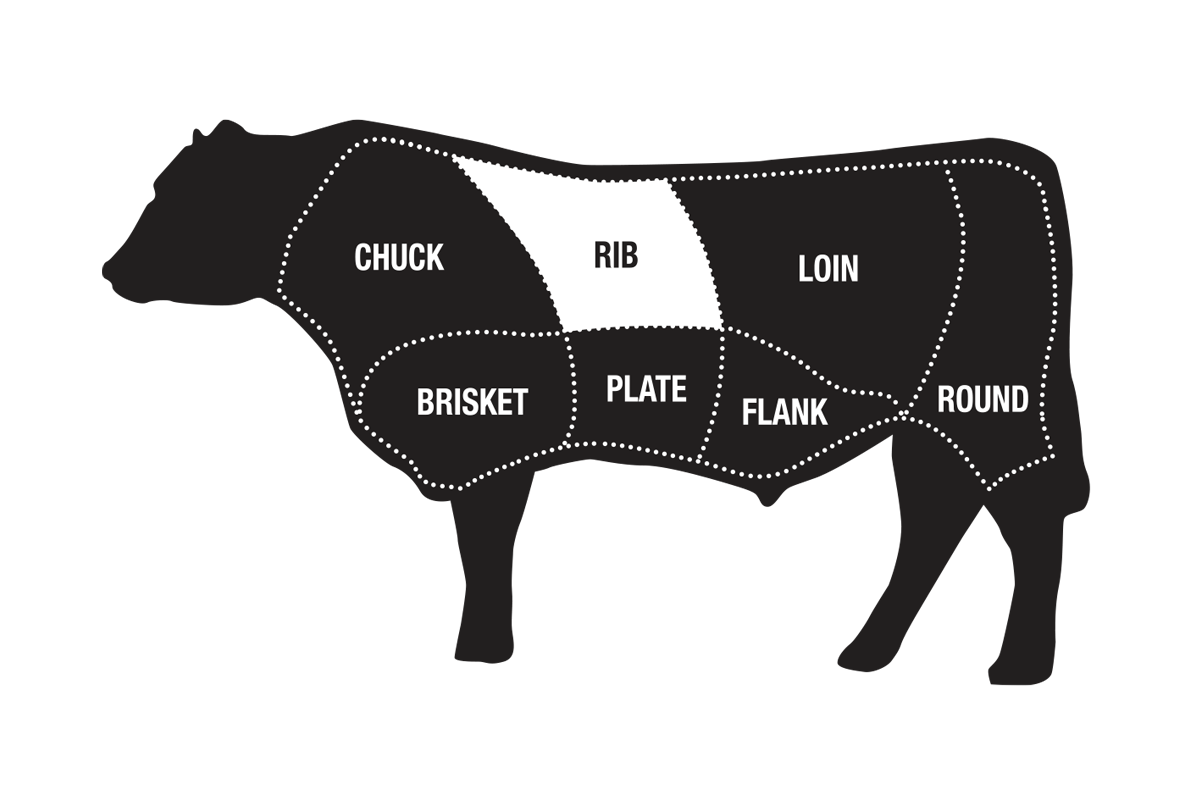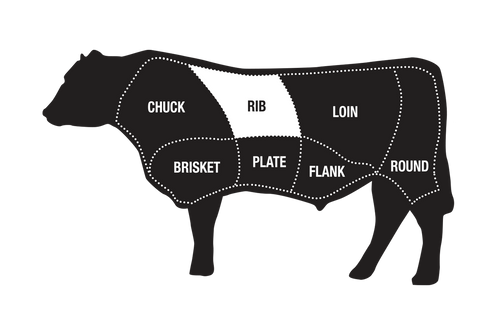Dry-Aged Bone-In Ribeye
Double R Ranch
This dry-aged USDA Prime ribeye is a favorite of steak connoisseurs. Extremely tender and flavorful, it is rich with the essence of dry-aging. Average weight is 32 oz.
Dry-Aged in NYC
Cut by Master Butchers
Proprietary Dry-Aged Process
The bone-in ribeye is widely known as the favorite cut of butchers, steak connoisseurs and beef aficionados. The ribeye is the most marbled cut, making it tender and extremely flavorful. The Prime grade indicates this steak has the highest level of marbling recognized by the USDA. We've made this amazing steak more flavorful with the element of dry-aging.
Working with our partner, Prime Food Distributor, we have created a dry-aged bone-in ribeye of unsurpassed quality and flavor. We start with our USDA Prime beef sourced from the heart of the Northwest. Like wine, beef can benefit from its terroir. The mild climates, open spaces and abundance of natural resources produce beef of unusually high quality.
When our beef is received in New York, it is measured and tagged so it can be tracked electronically. Our USDA Prime beef is aged in a precisely controlled dry-aging environment for a minimum of 30 days. When perfectly aged, our beef is hand cut into generous steaks and shipped to your door. You'll receive a spectacular bone-in ribeye with a more intense beef flavor and a rich, buttery aroma.
Average weight: 32 oz.
The two top USDA grades are Prime and Choice, which have the highest levels of marbling.
USDA Prime is the top grade on the USDA scale with the highest amount of marbling. Only 8 to 10% of all U.S. beef achieves this grade.
USDA Choice falls directly below USDA Prime. Choice beef is high quality and has less marbling but offers an excellent value.

Details
The bone-in ribeye is widely known as the favorite cut of butchers, steak connoisseurs and beef aficionados. The ribeye is the most marbled cut, making it tender and extremely flavorful. The Prime grade indicates this steak has the highest level of marbling recognized by the USDA. We've made this amazing steak more flavorful with the element of dry-aging.
Working with our partner, Prime Food Distributor, we have created a dry-aged bone-in ribeye of unsurpassed quality and flavor. We start with our USDA Prime beef sourced from the heart of the Northwest. Like wine, beef can benefit from its terroir. The mild climates, open spaces and abundance of natural resources produce beef of unusually high quality.
When our beef is received in New York, it is measured and tagged so it can be tracked electronically. Our USDA Prime beef is aged in a precisely controlled dry-aging environment for a minimum of 30 days. When perfectly aged, our beef is hand cut into generous steaks and shipped to your door. You'll receive a spectacular bone-in ribeye with a more intense beef flavor and a rich, buttery aroma.
Average weight: 32 oz.
Cooking Tips
Beef Grading
The two top USDA grades are Prime and Choice, which have the highest levels of marbling.
USDA Prime is the top grade on the USDA scale with the highest amount of marbling. Only 8 to 10% of all U.S. beef achieves this grade.
USDA Choice falls directly below USDA Prime. Choice beef is high quality and has less marbling but offers an excellent value.







